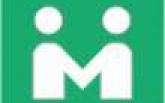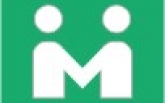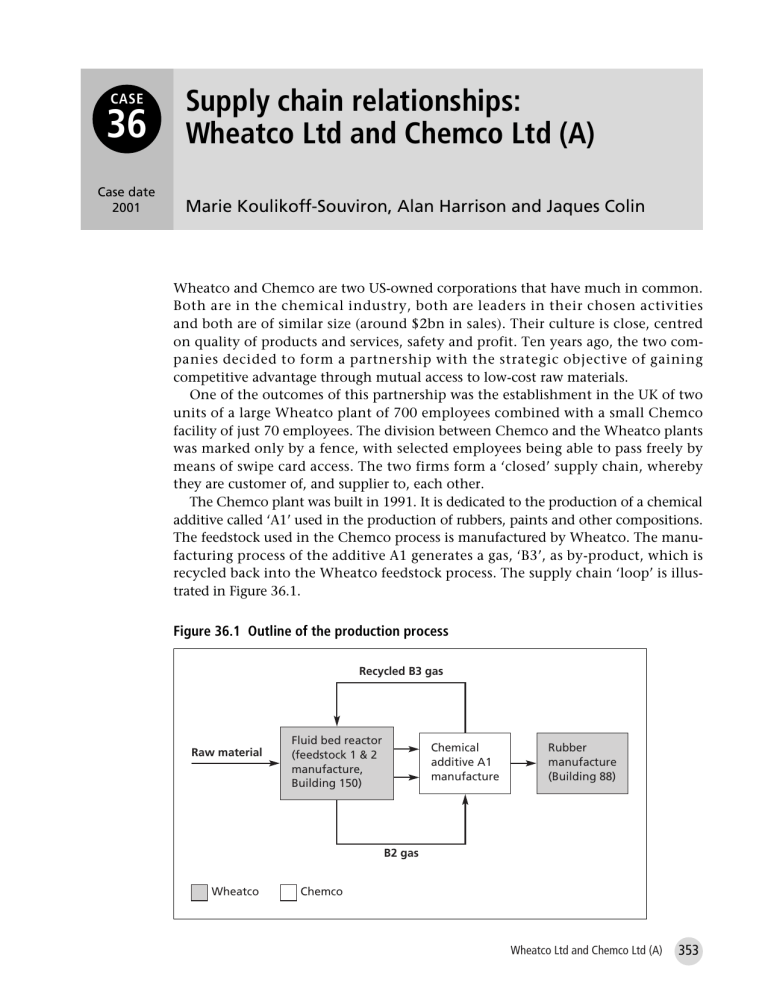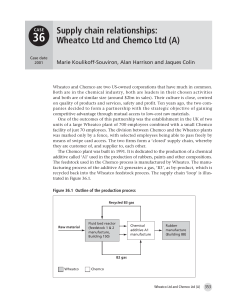Chemco Crisis Resolution and Public Relations Case Study
Identification of pertinent fact, formulation of key issues, the possible action by the government’s, analysis of the facts with the theories on the topic of issue, reach of conclusions, possible strategic implication, works cited.
In the real estate case mentioned in the case study, it is fundamental to note that the real estate company is in a crisis hence the need to resolve the conflict. It is in disagreement with the government’s expectation of the firm’s operation. It is also significant to note that the role of public relations in an organization is to create a mutual understanding between an organization and its immediate publics (Cutlip et al, 1985). In this case, the presence of mutual understanding has been ruined by a product provider company of the real estate company called Chemco. It is evident that Chemco sells evergreen floor laminated systems to the real estate company and also offers a warranty of 30 years after installation.
After some time, the government decides that Chemco has been producing dangerous materials for human health. Substandard products are not only harmful to our health but can lead to massive losses to a company that deals with the same. When such an issue is raised by a government body that regulates standards, the parties affected must move fast to rectify and amend the situation. The public relations office has a major duty to inform the public of the same and avoid any collateral damage that may be caused to the company by the said substandard products.
The evergreen floor laminated system causes cancer to people who habit the buildings and those who live around the same building hence a health hazard. It is also a fact to note that the real estate companies are likely to experience losses as the government has cautioned the general public on the health hazards associated with occupying the buildings (Bernays, Edward L, 1952). The relevant fact, therefore, is the crisis that the real estate company is undergoing between itself and the public.
The prime issues involved in this case affect all the immediate public of the real estate company which involves: the customers, these are the people who buy into the real estate company properties, the community, these involve anyone living around the completed properties, the shareholders, those who have invested in the property development and the government that regulates and controls the development of such properties.The key issues in this case study involve the following: The consequent actions that should be taken on Chemco company The right information to dispense to the public. The expected reaction of the real estate owners. The reaction of the tenants who had already occupied the buildings before the government’s warning.

List of Underlying Theories
The following theories are likely to be used in this case:
- Agenda-setting theory
- Persuasion theory
- Situational theory
Agenda-setting theory would come in the way the media dispenses information about the harm caused by the evergreen floor laminated system. The public will get the information and rely on it because of the opinion leadership qualities of the media. Media plays a major role in convincing the public on the true status of the situation, negative reporting may damage the reputation of the company while positive reporting goes a long way in boosting the corporate status of the company and the way it relates to its main stakeholders. Situation theory shows how passive and active people communicate messages differently.
In this case, the active people pass the information to others very fast than the passive who take a lot of time (Bernays, Edward L, 1952). Persuasion theory is applicable in initiating a change in belief or behavior. In this case, it can be used to change the belief that the evergreen floor laminated systems are from good to bad. It is therefore vital to understand the role of the public relations theories in the creation of crisis and solving of the crisis. In this case, as a public relations officer, I am likely to use these communication tactics indicated in the theories to calm the crisis by ensuring that the right corrections are done and the right communication is initiated.
The crisis at Chemco Company is all brought about by the availability of the evergreen floor laminated system and after keen scrutiny of the cause of the crisis, I will advise the CEO to take the necessary action which will solve the problem. I will persuade him to make the right corrections by avoiding any more purchase of the evergreen floor laminated system, initiating the removal of the current floors, and making a correction communication to the public. It is by doing all this that I will be able to re-shape the image of the organization’s hence the duty of a public relations officer (Grunig, James E, and Todd Hunt, 1984).
The possible strategic suggestion, in this case, is to avoid any kind of harm to the organization’s immediate public by maintaining a mutual understanding between the company and its publics.
Bernays, Edward L. Public Relations . Norman: University of Oklahoma Press, 1952. Print.
Cutlip, Scott M, Allen H. Center, and Glen M. Broom. Effective Public Relations . Englewood Cliffs, N.J: Prentice-Hall, 1985. Print.
Grunig, James E, and Todd Hunt. Managing Public Relations . New York: Holt, Rinehart and Winston, 1984. Print.
- Conversation-Oriented Leadership Importance
- Technical Communication as a Business Key Point
- Agenda-Setting and the Presidential Election
- Guitar Construction: Acoustical Features
- Agenda-Building, Agenda-Setting, Framing, and PR
- The Style of British Business Negotiations
- Journal of Information, Communication and Ethics in Society
- Power Distance in the Society
- Doing Business In Canada
- Business Writing: Principles and Features
- Chicago (A-D)
- Chicago (N-B)
IvyPanda. (2022, January 31). Chemco Crisis Resolution and Public Relations. https://ivypanda.com/essays/chemco-crisis-resolution-and-public-relations/
"Chemco Crisis Resolution and Public Relations." IvyPanda , 31 Jan. 2022, ivypanda.com/essays/chemco-crisis-resolution-and-public-relations/.
IvyPanda . (2022) 'Chemco Crisis Resolution and Public Relations'. 31 January.
IvyPanda . 2022. "Chemco Crisis Resolution and Public Relations." January 31, 2022. https://ivypanda.com/essays/chemco-crisis-resolution-and-public-relations/.
1. IvyPanda . "Chemco Crisis Resolution and Public Relations." January 31, 2022. https://ivypanda.com/essays/chemco-crisis-resolution-and-public-relations/.
Bibliography
IvyPanda . "Chemco Crisis Resolution and Public Relations." January 31, 2022. https://ivypanda.com/essays/chemco-crisis-resolution-and-public-relations/.
- To find inspiration for your paper and overcome writer’s block
- As a source of information (ensure proper referencing)
- As a template for you assignment
IvyPanda uses cookies and similar technologies to enhance your experience, enabling functionalities such as:
- Basic site functions
- Ensuring secure, safe transactions
- Secure account login
- Remembering account, browser, and regional preferences
- Remembering privacy and security settings
- Analyzing site traffic and usage
- Personalized search, content, and recommendations
- Displaying relevant, targeted ads on and off IvyPanda
Please refer to IvyPanda's Cookies Policy and Privacy Policy for detailed information.
Certain technologies we use are essential for critical functions such as security and site integrity, account authentication, security and privacy preferences, internal site usage and maintenance data, and ensuring the site operates correctly for browsing and transactions.
Cookies and similar technologies are used to enhance your experience by:
- Remembering general and regional preferences
- Personalizing content, search, recommendations, and offers
Some functions, such as personalized recommendations, account preferences, or localization, may not work correctly without these technologies. For more details, please refer to IvyPanda's Cookies Policy .
To enable personalized advertising (such as interest-based ads), we may share your data with our marketing and advertising partners using cookies and other technologies. These partners may have their own information collected about you. Turning off the personalized advertising setting won't stop you from seeing IvyPanda ads, but it may make the ads you see less relevant or more repetitive.
Personalized advertising may be considered a "sale" or "sharing" of the information under California and other state privacy laws, and you may have the right to opt out. Turning off personalized advertising allows you to exercise your right to opt out. Learn more in IvyPanda's Cookies Policy and Privacy Policy .

- Testimonial
- Web Stories
Learning Home

Not Now! Will rate later

MBA Case Studies - Solved Examples

Need of MBA Case Studies
Case i: chemco case.
- ChemCo is a quality leader in the U.K. car batteries market.
- Customer battery purchases in the automobile market are highly seasonal.
- The fork-lift business was added to utilize idle capacity during periods of inactivity.
- This is a low-growth industry (1% annual growth over the last two years)
- Large customers are sophisticated and buy based on price and quality. Smaller customers buy solely on price.
- There is a Spanish competitor in the market who offers low priced batteries of inferior quality.

Essential MBA GD Guide: Key Topics with Strategies Free
- Importance of Group Discussions
- Tips and Strategies to handle a GD
- Top 25 GD topics
- Free Download
- Established player in car batteries
- Losing heavily in fork-lift truck batteries
- Old fashioned owner resistance to change
- Low priced competitors
- Foreign competitors gaining market share
- Decisive Interview, GD & Essay prep
- GD: Topics 2021
- GD: Approach
- GD: Do's and Don'ts
- GD: Communications
- Solved GDs Topics
GD Introduction
- Types of GD topics: Techniques
- GD: Ettiquette
- GD: Content
- Solved Case Studies
- High quality product, but low end customers care more about price than quality
- Mismanaged product diversification in a price sensitive market
- Alternative 1: Establish an Off-Brand for the fork-lift business
- Alternative 2: Educate the customer market about product quality
- Alternative 3: Exit the fork-lift battery business
- Establishing the firm's quality image
- Increase in market share
- Increase in sales
- Cost of the product
- Protect firm's quality image in the automobile industry
- Redesigned product to reduce the cost of manufacture
- Low price to enable it to compete with Spanish producer
- Make use of the quality leadership in car batteries market
- Offer reliability testing, extended warranties etc. to promote quality image
- Set higher prices to extract surplus from these advantages
- A passive strategy, not proactive
- Recommendations: Alternative 1 is recommended in this case. Since the firm operates in an industry which has low growth, hence it can expand market share and sales only by taking the customers from other players. Hence, it needs to tackle the Spanish competitor head-on by aggressively pricing its product. At the same time, launching a low-priced product under the same brand name erodes the high quality image in the car batteries market. Hence, the best option is to go for an off-brand to target the fork-lift customers who are increasingly becoming price sensitive. This will enable the company to ward off the threat in short-term and build its position strongly in the long-term.

Case II: NAKAMURA LACQUER COMPANY
- The Nakamura Lacquer Company: The Nakamura Lacquer Company based in Kyoto, Japan was one of the many small handicraft shops making lacquerware for the daily table use of the Japanese people.
- Mr. Nakamura- the personality: In 1948, a young Mr. Nakamura took over his family business. He saw an opportunity to cater to a new market of America, i.e. GI's of the Occupation Army who had begun to buy lacquer ware as souvenirs. However, he realized that the traditional handicraft methods were inadequate. He was an innovator and introduced simple methods of processing and inspection using machines. Four years later, when the Occupation Army left in 1952, Nakamura employed several thousand men, and produced 500,000 pieces of lacquers tableware each year for the Japanese mass consumer market. The profit from operations was $250,000.
- The Brand: Nakamura named his brand “Chrysanthemum” after the national flower of Japan, which showed his patriotic fervor. The brand became Japan's best known and best selling brand, being synonymous with good quality, middle class and dependability.
- The Market: The market for lacquerware in Japan seems to have matured, with the production steady at 500,000 pieces a year. Nakamura did practically no business outside of Japan. However, early in 1960, when the American interest in Japanese products began to grow, Nakamura received two offers
- The Rose and Crown offer: The first offer was from Mr. Phil Rose, V.P Marketing at the National China Company. They were the largest manufacturer of good quality dinnerware in the U.S., with their “Rose and Crown” brand accounting for almost 30% of total sales. They were willing to give a firm order for three eyes for annual purchases of 400,000 sets of lacquer dinnerware, delivered in Japan and at 5% more than what the Japanese jobbers paid. However, Nakamura would have to forego the Chrysanthemum trademark to “Rose and Crown” and also undertaken to sell lacquer ware to anyone else the U.S. The offer promised returns of $720,000 over three years (with net returns of $83,000), but with little potential for the U.S. market on the Chrysanthemum brand beyond that period.
- The Semmelback offer: The second offer was from Mr. Walter Sammelback of Sammelback, Sammelback and Whittacker, Chicago, the largest supplier of hotel and restaurant supplies in the U.S. They perceived a U.S. market of 600,000 sets a year, expecting it to go up to 2 million in around 5 years. Since the Japanese government did not allow overseas investment, Sammelback was willing to budget $1.5 million. Although the offer implied negative returns of $467,000 over the first five years, the offer had the potential to give a $1 million profit if sales picked up as anticipated.
- Meeting the order: To meet the numbers requirement of the orders, Nakamura would either have to expand capacity or cut down on the domestic market. If he chose to expand capacity, the danger was of idle capacity in case the U.S. market did not respond. If he cut down on the domestic market, the danger was of losing out on a well-established market. Nakamura could also source part of the supply from other vendors. However, this option would not find favor with either of the American buyers since they had approached only Nakamura, realizing that he was the best person to meet the order.
- Decision problem: Whether to accept any of the two offers and if yes, which one of the two and under what terms of conditions?
- To expand into the U.S. market.
- To maintain and build upon their reputation of the “Chrysanthemum” brand
- To increase profit volumes by tapping the U.S. market and as a result, increasing scale of operations.
- To increase its share in the U.S. lacquerware market.
- Profit Maximization criterion: The most important criterion in the long run is profit maximization.
- Risk criterion: Since the demand in the U.S. market is not as much as in Japan.
- Brand identity criterion: Nakamura has painstakingly built up a brand name in Japan. It is desirable for him to compete in the U.S. market under the same brand name
- Flexibility criterion: The chosen option should offer Nakamura flexibility in maneuvering the terms and conditions to his advantage. Additionally, Nakamura should have bargaining power at the time of renewal of the contract.
- Short term returns: Nakamura should receive some returns on the investment he makes on the new offers. However, this criterion may be compromised in favor of profit maximization in the long run.?
- Reject both: React both the offers and concentrate on the domestic market
- Accept RC offer: Accept the Rose and Crown offer and supply the offer by cutting down on supplies to the domestic market or through capacity expansion or both
- Accept SSW: offer; accept the SSW offer and meet it through cutting down on supply to the domestic market or through capacity expansion or both. Negotiate term of supply.
- Reject both: This option would not meet the primary criterion of profit maximization. Further, the objective of growth would also not be met. Hence, this option is rejected.
- Accept RC offer: The RC offer would assure net returns of $283,000 over the next three yeas. It also assures regular returns of $240,000 per year. However, Nakamura would have no presence in the U.S. with its Chrysanthemum brand name The RC offer would entail capacity expansion, as it would not be possible to siphon of 275,000 pieces from the domestic market over three years without adversely affecting operations there. At the end of three years, Nakamura would have little bargaining power with RC as it would have an excess capacity of 275,000 pieces and excess labor which it would want to utilize. In this sense the offer is risky. Further, the offer is not flexible. Long-term profit maximization is uncertain in this case a condition that can be controlled in the SSW offer. Hence, this offer is rejected.
- Accept SSW offer: The SSW offer does not assure a firm order or any returns for the period of contract. Although, in its present form the offer is risky if the market in the U.S. does not pick up as expected, the offer is flexible. If Nakamura were to exhibit caution initially by supplying only 300,000 instead of the anticipated 600,000 pieces, it could siphon off the 175,000 required from the domestic market. If demand exists in the U.S., the capacity can be expanded. With this offer, risk is minimized. Further, it would be competing on its own brand name. Distribution would be taken care of and long-term profit maximization criterion would be satisfied as this option has the potential of $1 million in profits per year. At the time of renewal of the contract, Nakamura would have immense bargaining power.
- Negotiate terms of offer with SSW: The terms would be that NLC would supply 300,000 pieces in the first year. If market demand exists, NLC should expand capacity to provide the expected demand.
- Action Plan: In the first phase, NLC would supply SSW with 300,000 pieces. 125,000 of these would be obtained by utilizing excess capacity, while the remaining would be obtained from the domestic market. If the expected demand for lacquer ware exists in the U.S., NLC would expand capacity to meet the expected demand. The debt incurred would be paid off by the fifth year.
- Contingency Plan: In case the demand is not as expected in the first year, NLC should not service the U.S. market and instead concentrate on increasing penetration in the domestic market.
FAQs about MBA Case Studies
- Group Discussions
- Personality
- Past Experiences
Most Popular Articles - PS

100 Group Discussion (GD) Topics for MBA 2024

Solved GDs Topic

Top 50 Other (Science, Economy, Environment) topics for GD
5 tips for starting a GD

GD FAQs: Communication

GD FAQs: Content

Stages of GD preparation

Group Discussion Etiquettes


Case Study: Tips and Strategy

Practice Case Studies: Long

Practice Case Studies: Short
5 tips for handling Abstract GD topics
5 tips for handling a fish market situation in GD
5 things to follow: if you don’t know much about the GD topic

Do’s and Don’ts in a Group Discussion
5 tips for handling Factual GD topics

How to prepare for Group Discussion
- by Academic Documents
- Access the best Study Guides Lecture Notes and Practice Exams Log In Sign Up
This preview shows page 1-2 out of 5 pages .
ChemCo Distribution Case Study Developed by Jose J Hernandez MIT MLOG 03 Introduction ChemCo a specialty chemical manufacturer is considering how to best redesign its distribution network in Texas This decision is especially relevant as the due date approaches for renewing their contracts with several of the 3PL warehouses they are currently using David the operations manager for the Texas region has been actively leading the improvement of their Houston plant to remove bottlenecks in both production and distribution of the chemical products The Houston plant has always been a busy place and demand has had significant growth in the last 5 years The Houston plant s ability to ship to customers was seriously constrained by congestion in its shipping and receiving area Two years ago it was common to see a long line of trucks waiting to be loaded in the shipping area and the associated cost of overtime But by the end of 2004 David had leaned out the plant operations to the point that the shipping area had 30 excess capacity It was then when he started rethinking the current distribution network design David wondered if it still made sense to have a separate distribution center in Dallas and if not how they would be able to serve those customers To help him make a sound decision David has asked for some supply chain management help Unfortunately there is very limited time and data available for the analysis Your team has been called into help in making a recommendation to David within the next few days Fall 2006 ChemCo Case Study Page 1 of 5 Background ChemCo manufactures bulk chemicals used in the construction industry One plant Houston and seven warehouses Dallas Port Barre Jackson El Paso Albuquerque Denver and Olathe support company operations in the southwest region of the US as shown in Exhibit 1 All products are delivered to customers either from one of the seven warehouses or direct from the Houston plant Denver Olathe Albuquerque Jackson Dallas El Paso Port Barre 400 mi Houston Exhibit 1 Plant and warehouse locations in the southwest region Currently the Houston plant handles the almost a third of all customer deliveries followed by the Dallas warehouse with 18 of all shipments as shown in Exhibit 2 All 100 Port Barre 8 Other DC s 42 Dallas 18 Houston 32 Exhibit 2 Delivery contribution by location All deliveries to customers are made using multi compartmented bulk as shown in Exhibit 3 Using compartmented vehicles rather than single tank bulk trucks allows ChemCo to deliver several different chemicals to the same or multiple customers in the same trip It is not uncommon for a truck to deliver to multiple customers in the same milk run Fall 2006 ChemCo Case Study Page 2 of 5 1200 gal 600 gal 300 gal 900 gal 1000 gal Figure by MIT OCW Exhibit 3 Multi compartmented bulk tanker truck All of the warehouses as well as the Houston plant hold finished good inventory These warehouse inventories are replenished from the Houston plant using 275 gallon plastic totes as shown in Exhibit 4 For a company that ships bulk chemicals it might appear counter intuitive that warehouse replenishment is made using plastic totes rather than larger single tank bulk trucks A couple of years ago ChemCo decided to switch from replenishing their warehouses with bulk trucks to totes mainly due to the greater availability of both common Figure by MIT OCW Exhibit 4 275 gallon dry van transportation and public storage The public warehouses generally allow storage of chemicals in these totes while restricting chemical container or charging much more for large fixed tanks Using totes instead tote of bulk tanks however does involve additional packaging and handling steps as illustrated in Exhibit 5 Direct shipping from the plant I FG Storage Tanks Deliver to Customer Customer Tanks Shipping through a warehouse I FG Storage Tanks I Package Totes Staging Area I Ship to DC DC Inventory Deliver to Customer Customer Tanks Exhibit 5 Operation steps involved in shipping direct from the plant vs shipping from a warehouse The Dallas Warehouse Monty the logistics supervisor at the Dallas warehouse explains the details of their operations We ve had 3 drivers since we opened the warehouse in 2000 They work hard and last year alone we drove some 230 thousand miles The Department of Transportation doesn t allow more than 60 hours of work per week by driver and our average is about 54 working hours He continued explaining the details Our drivers do it all They load very early at the plant drive and unload the chemicals at our customer tanks Fall 2006 ChemCo Case Study Page 3 of 5 He also explained that they aggregate and route their shipments into three territories Northwest Northeast and Central surrounding the Dallas warehouse as shown in Exhibit 6 He commented that the deliveries outside this zone are exceptional and represent a small fraction of the total workload Each zone is defined as a collection of 3 digit postal code regions as shown in the attached spreadsheet in the tab routing territories NORTH WEST EASTERN CENTRAL Figure by MIT OCW Exhibit 6 Zones for shipping to customers from the Dallas warehouse The attached spreadsheet contains data available for your analysis There are three tabs Deliveries This lists the deliveries made to all relevant customers in 2004 The customer ID number product ID number delivery date and quantity are provided for each delivery Customer info This tab contains all of the relevant customers The customer ID and location is provided The location is described both as city state postal code and latitude longitude The latitude longitude was collected using the website www batchgeocode com This data should be checked for any anomalies Routing territories This tab shows the territories that are currently used out of the Dallas warehouse Also the 3 digit postal codes that correspond to each of the territories are listed as well Neither Monty nor David can provide any more detailed information in time for your analysis Monty did note that deliveries to customers are made on a weekly planning basis He estimated that it takes about 45 minutes per stop at each the customer site and an hour and a half to load a 4000 gallon trailer He also commented that in 2004 for the average trip the trailers were only filled to 80 of their capacity Fall 2006 ChemCo Case Study Page 4 of 5 For the purpose of this analysis Dave is willing to make the following additional assumptions Each driver s salary and
MIT ESD 260 - ChemCo Distribution Case Study

DEMAND FORECASTING

Problem Set #1

Special Cases Probabilistic Demand

Study Notes

Study Guide

Time Series Analysis

Demand Forecasting

Lecture Notes

Supply Contracts

Inventory Management

Transportation Management

Single Period Inventory Models

Transportation Procurement in the Digital Age

Supply Chain Fundamentals & Segmentation Analysis
Sign up for free to view:
- This document and 3 million+ documents and flashcards
- High quality study guides, lecture notes, practice exams
- Course Packets handpicked by editors offering a comprehensive review of your courses
- Better Grades Guaranteed
- Terms Of Use
- Privacy Policy
- Recent Documents
- Students with Disabilities
- Become a Note-Taker
Please select your school
Join to view ChemCo Distribution Case Study and access 3M+ class-specific study document.
We couldn't create a GradeBuddy account using Facebook because there is no email address associated with your Facebook account.
Link an email address with your Facebook below or create a new account.

Product details

- No category
Case study - wheatco and chemco part A

Related documents

Add this document to collection(s)
You can add this document to your study collection(s)
Add this document to saved
You can add this document to your saved list
Suggest us how to improve StudyLib
(For complaints, use another form )
Input it if you want to receive answer

COMMENTS
Introduction. ChemCo, a specialty chemical manufacturer, is considering how to best redesign its distribution network in Texas. This decision is especially relevant as the due date approaches for renewing their contracts with several of the 3PL warehouses they are currently using. David, the operations manager for the Texas region, has been ...
Case date. 2001. Supply chain relationships: Wheatco Ltd and Chemco Ltd (A) Marie Koulikoff-Souviron, Alan Harrison and Jaques Colin. Wheatco and Chemco are two US-owned corporations that have much in common. Both are in the chemical industry, both are leaders in their chosen activities. and both are of similar size (around $2bn in sales).
Case studies were carried out in five large multinational corporations in the financial services, ... The ChemCo case differs slightly from the previous three cases. ChemCo's public scandal stemmed from a single event (rather than a cluster of events) that came to a head 7 years before the interviews were held. ... Conclusion. This study has ...
contrast between an inter- with an intra-firm context and cross-case analysis has involved identifying similarities and differences across the two cases. Conclusions shed a light on the specific organisational requirements of supply relationships. Case Study 1: Inter-Firm . Wheatco and Chemco were two US corporations that had much in common.
Expand. 432. PDF. David, the operations manager for the Texas region, has been actively leading the improvement of their Houston plant to remove bottlenecks in both production and distribution of the chemical products. Introduction ChemCo, a specialty chemical manufacturer, is considering how to best redesign its distribution network in Texas.
The 'Chemco' case study ... In conclusion, the chapter acknowledges the synergistic potential with other emerging technologies such as 3D printing, Robots, Drones, self-driving cars, and the like ...
Two major decisions were taken by Chemco that could be attributed in large part to the Bhopal disaster: the divestiture of one of its plants and the sale of a business. An analysis of those actions by Chemco underscores the importance of reference points and constraints in influencing organizational choices.
ChemCo Distribution Case Study. Developed by Jose J. Hernandez MIT MLOG '03. Introduction. ChemCo, a specialty chemical manufacturer, is considering how to best redesign its. distribution network in Texas. This decision is especially relevant as the due date. approaches for renewing their contracts with several of the 3PL warehouses they are.
It is evident that Chemco sells evergreen floor laminated systems to the real estate company and also offers a warranty of 30 years after installation. Get a custom case study on Chemco Crisis Resolution and Public Relations. After some time, the government decides that Chemco has been producing dangerous materials for human health.
Prepare for B-school admission rounds, with these MBA case study examples. It is common for B-schools to incorporate a case-based discussion in the group exercise round or give a case study in a personal interview. So, here we have presented two popular MBA case study examples, with analysis and solution.
Case Study I CHEMCO CASE Started in 1965, ChemCo is a leading manufacturer of car batteries in the U. market. Since then, it has been under the charge of Mr. Jones, the founder-owner of the firm. In 1999, the company decided to go for a diversification by expanding the product line. The new product was batteries for fork-lift trucks.
Unformatted text preview: ChemCo Distribution Case Study Developed by Jose J Hernandez MIT MLOG 03 Introduction ChemCo a specialty chemical manufacturer is considering how to best redesign its distribution network in Texas This decision is especially relevant as the due date approaches for renewing their contracts with several of the 3PL warehouses they are currently using David the operations ...
Chemical Corp of America (Chemco), a US-based petrochemical corporation, has been building up its Asia-Pacific presence since 1994, culminating in the establishment of a regional headquarters in Singapore. The onset of the Asian economic crisis puts this strategy in jeopardy and at a Board meeting held in Houston, members argue very different ...
Case date. 2001. Supply chain relationships: Wheatco Ltd and Chemco Ltd (A) Marie Koulikoff-Souviron, Alan Harrison and Jaques Colin. Wheatco and Chemco are two US-owned corporations that have much in common. Both are in the chemical industry, both are leaders in their chosen activities. and both are of similar size (around $2bn in sales).
Platinum's Hydrovac fleet is equipped with 360 birds eye. camera systems for additional public/work site safety. Our Hydrovacs excavate and haul. between 7,500 - 10,500 cubic meters of. slurry each month. Our HDD division installs between 200 -. 300,000 meters of underground/pipeline. conduits per year. Ranging from 2" to 16".
Conclusion. Our evaluation of feature steering in Claude 3 Sonnet revealed both promising initial results as well as limitations of the technique. Encouragingly, our experiments revealed a "sweet spot" where feature steering can influence model outputs while not significantly degrading capabilities. ... A Case Study in Mitigating Social ...